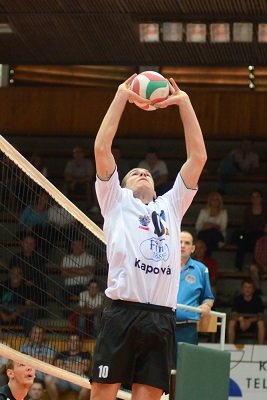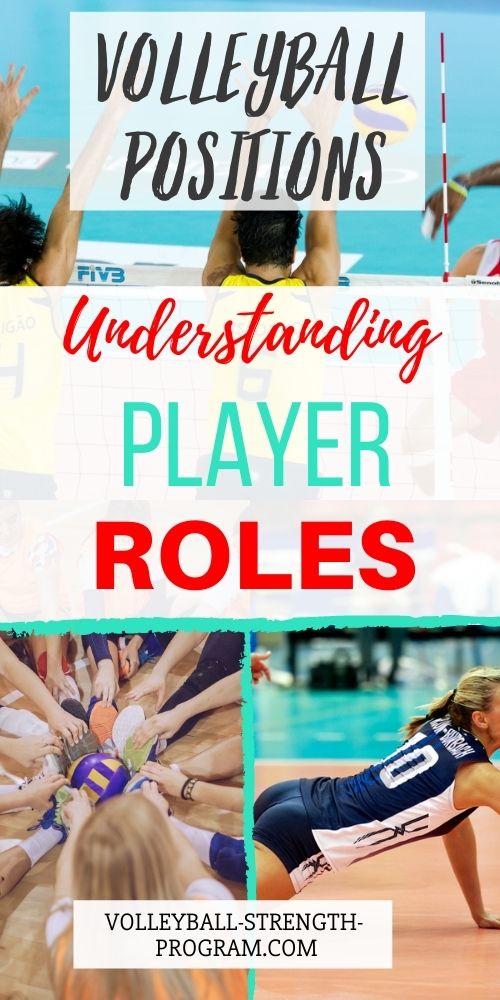Volleyball Positions
Key player positions in volleyball
The main volleyball positions in volleyball are setter, outside hitter, libero, middle hitter, and opposite.
The setter position is usually considered the most important. The setter is like the quarterback.
The setter touches the ball more than any other player. The setter runs the offense and is
the player "in charge" out on the court.
The best setters have mastered the basic skills in volleyball.
A good setter can make or break a team.
Of all the volleyball positions, no player affects the performance of a team more than the setter.
Do you need help choosing a setter?
The following are attributes to look for in a setter...
- Right attitude. The setter needs to be emotionally stable. The setter must be able to handle pressure and learn from mistakes without becoming overwhelmed.
- Coachable. The setter must be able to absorb and use what the coach teaches.
- Leadership. If the setter is confident in his/her role, the rest of the team will tend to be confident also.
- Problem solver. The setter must be able to make split-second decisions. The setter solves problems by quickly discerning what's happening. For example, is the hitter "struggling" or just being "shut down" by the defense? The setter needs to know how to circumvent situations.
- Observant. The setter needs to recognize what's happening. Where are the best blockers? What players on the team are hitting well?
If you enjoyed these tips and would like to keep it close to you at any time, just save this pin to your Pinterest Volleyball Training Board.
Outside Hitter Volleyball Positions
The outside hitter is usually the player on the team that has well-rounded skills.
For example, the outside hitter must become good at hitting the "high
set outside" because this
is where most of the sets go. The
outside hitter is also usually good at hitting "out of system" sets
because setting outside is usually the choice for when a team
makes a bad pass.
The outside hitter should be a pretty good passer. The outside hitter
usually steps back to help out with passing in serve receive.
An outside hitter that can't pass very well is usually a target in serve
receive.
Since the outside hitter has a fairly active role on the team, outside hitter's need to show leadership.
When the game is on the line, it's usually the outside hitter that get's set to make the play.
Libero
The libero on the team is the player wearing a different colored jersey.
The jersey is different because there are different rules for the libero.
The libero doesn't sub into the game like regular players. The libero makes "replacements" of back row players.
The libero can only play on the back row. The libero also can't attack a ball that's completely above the top of the net.

The libero specializes in passing and digging.
The libero must develop a repertoire of skills for passing and defense.
The libero learns a variety of defensive floor moves such as sprawls and pancakes that help keep the ball in play.
Middle Hitter
The middle hitter needs to be quick and tall for blocking and hitting.
The middle hitter is also sometimes referred to as the middle blocker because often
the strategy is for the middle to help out blocking.
The middle hitter usually hits really fast sets. The middle is often used as a
decoy to draw the opposing block.
On occasion, a middle will develop really good hitting skills. Running quick plays
often results in dynamic attacks out of the middle.
It can be difficult to run middle because in order to run quick plays to the middle, you need a good pass. This is
why volleyball is often a contest between the server and the passer.
Opposite Position
The opposite is the player that plays opposite the setter. This is also referred to as the right side or weak side hitter.
The opposite mainly attacks from the right side of the court.
This player is usually taller because blocking is especially important on the
right side.
The opposite isn't usually concerned with developing great passing skills
because passing isn't a priority for this volleyball position.
When running a 6-2, the opposite is usually the player subbing into the match to
play across the front row for a setter.
Volleyball › Volleyball Terms › Volleyball Positions
ACCESS MY STRENGTH SECRETS





